Glacier National Park boasts an abundance of wildlife—one of the most intact ecosystems in the lower 48 states. The park is home to at least 19 large mammals, including bear, moose and bighorn sheep. These magnificent animals are exciting to witness in their natural setting, however, wildlife is just that: wild. We need to respect their space, for their safety and ours. To help keep wildlife a safe distance from visitors, the park hired an expert on the subject—Gracie the Bark Ranger. Learn how Gracie is keeping you safe this season, and discover best practices when it comes to wildlife safety. Warning, cuteness overload ahead.
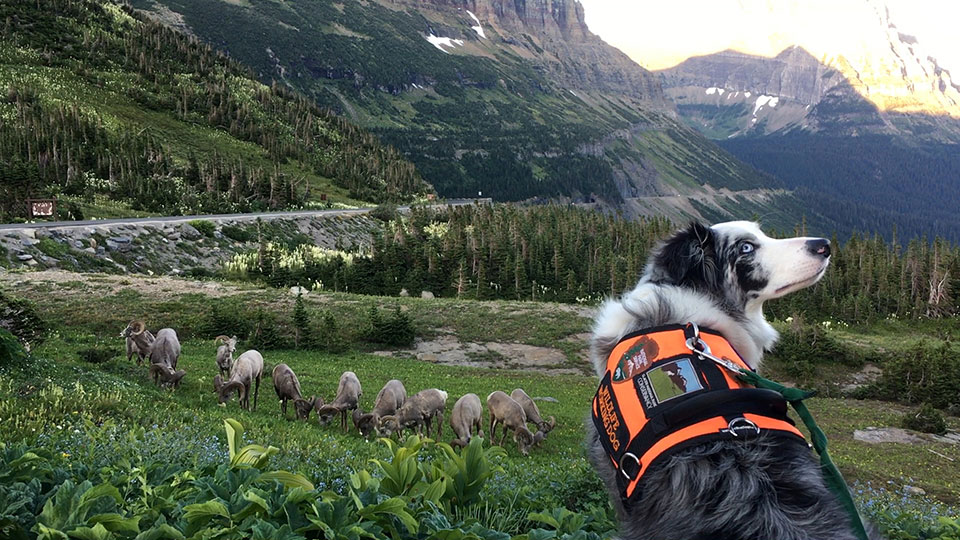
BARK RANGER GRACIE
The secret is out, Glacier National Park’s sheer beauty is unrivaled, and as the number of visitors increases each year, so does the likelihood of human-wildlife interactions. To address visitor safety, Glacier National Park hired an employee-owned dog for wildlife shepherding. Bark Ranger Gracie is a professionally trained border collie who moves bighorn sheep and mountain goats out of dense visitor areas. Gracie shepherds wildlife by applying pressure from a distance through standing her ground and the occasional staredown. And no, she does not work on bears!
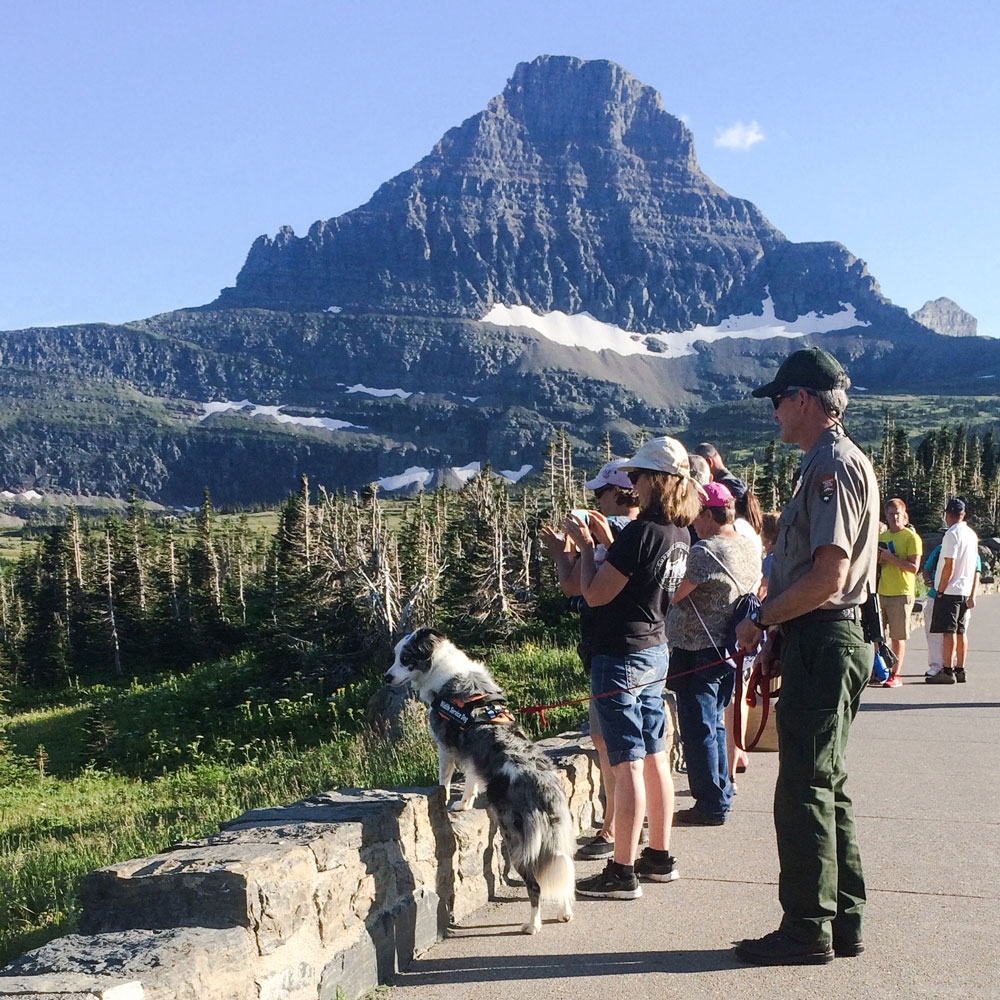
You’ll often find Gracie working on-leash at Logan Pass. At the crest of the Continental Divide, Logan Pass serves up jaw-dropping views of meadows filled with wildflowers and the occasional mountain goat or bighorn sheep, and, sometimes, a grizzly bear or two. As one of the most popular passes with the highest elevation reachable by car, the parking lot is generally full during the day. Bighorn sheep and other wildlife have been habituated to visit the parking lot to scavenge for litter left behind by visitors.
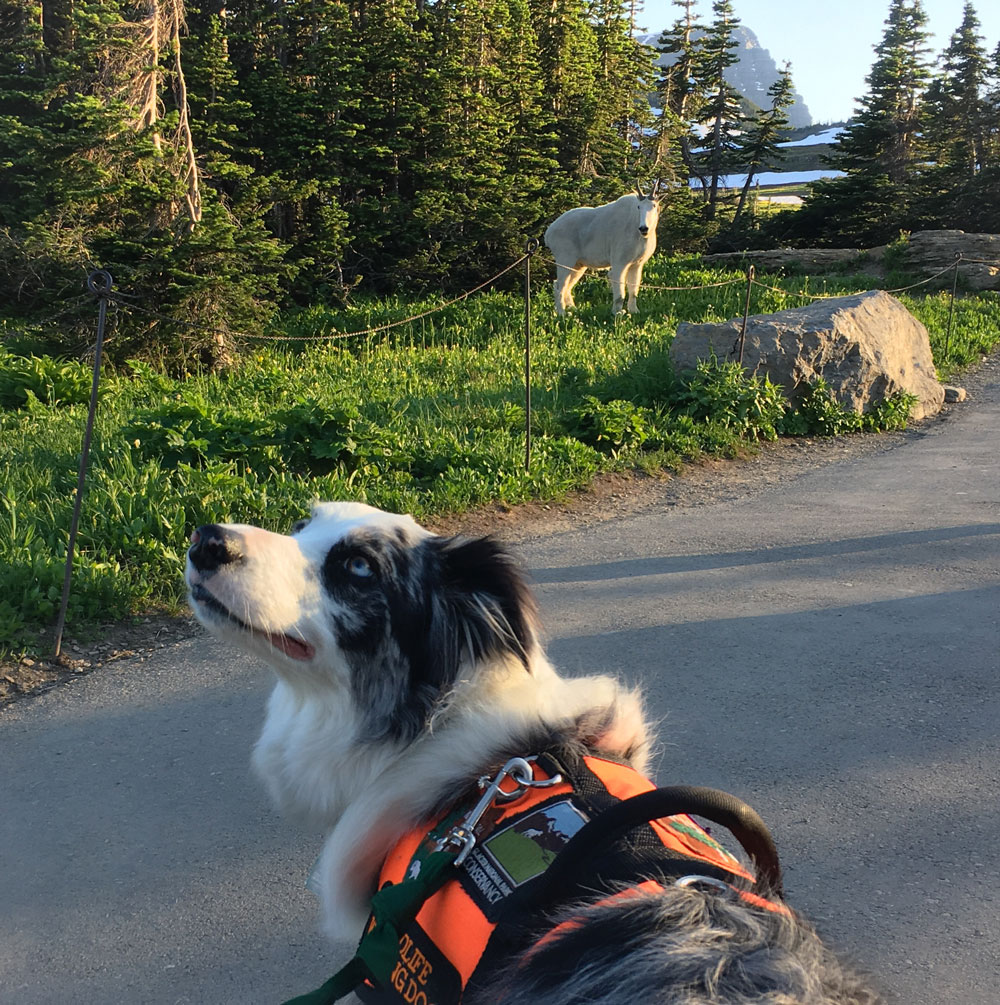
Habituation happens when wildlife are repeatedly exposed to humans and then no longer see visitors as a threat. Wildlife may approach visitors themselves or may allow visitors to come close to them. However, any wildlife in close proximity creates a dangerous situation for both humans and animals. Wildlife can become aggressive at any point if they suddenly feel threatened, and they may kick, bite or gore. Bark Ranger Gracie shepherds animals to stay 30 – 75 yards away from the parking lot, which is still a close enough distance for visitors to watch and get a picture-perfect photo. Wildlife shepherding works because mountain goats and bighorn sheep have an innate fear of predators, and they view Gracie as a predator.
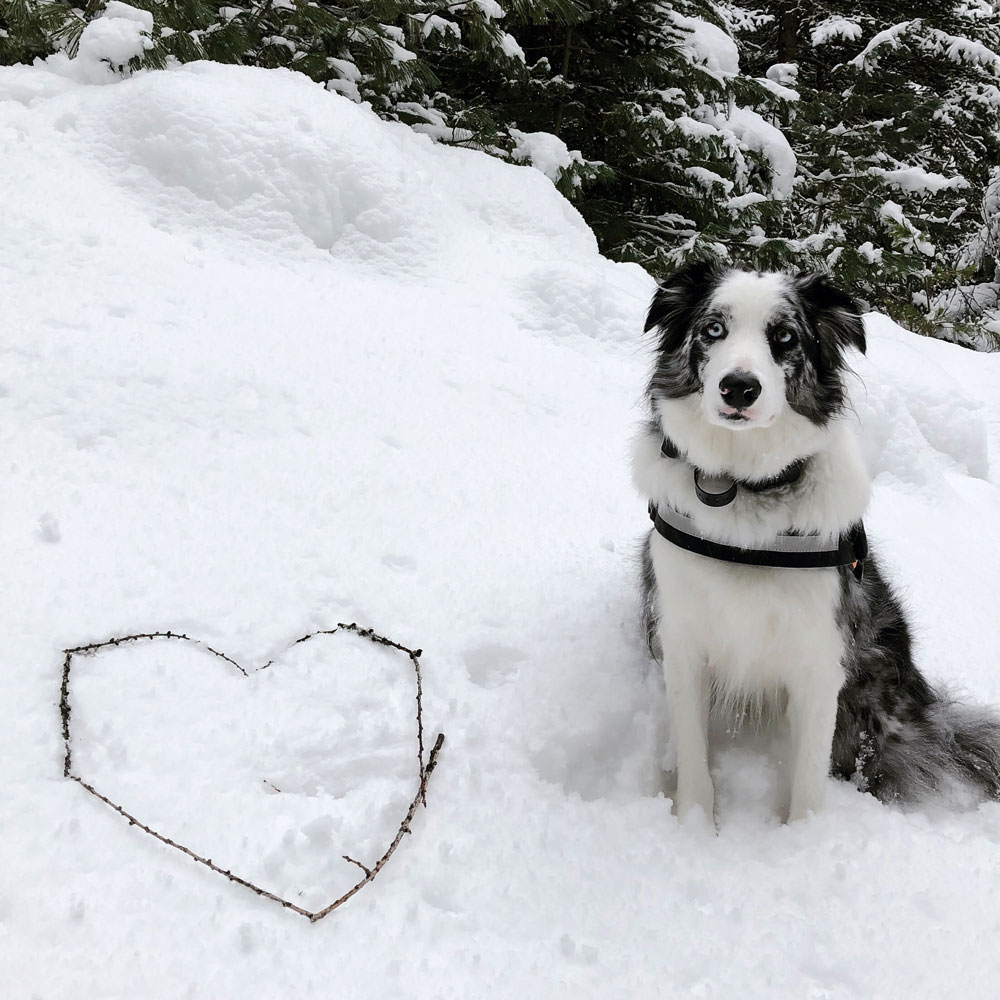
Glacier National Park’s ultimate goal for the wildlife shepherding program is to teach mountain goats and bighorn sheep to decide for themselves to avoid dense visitor areas. You’ll also find Gracie educating visitors on wildlife safety and why approaching and feeding wildlife is dangerous. During the winter, Gracie keeps up with her commands by herding deer out of the park’s headquarters and residential areas. Mountain lions will follow their prey, and moving deer out of populated areas also helps reduce the presence of mountain lions.
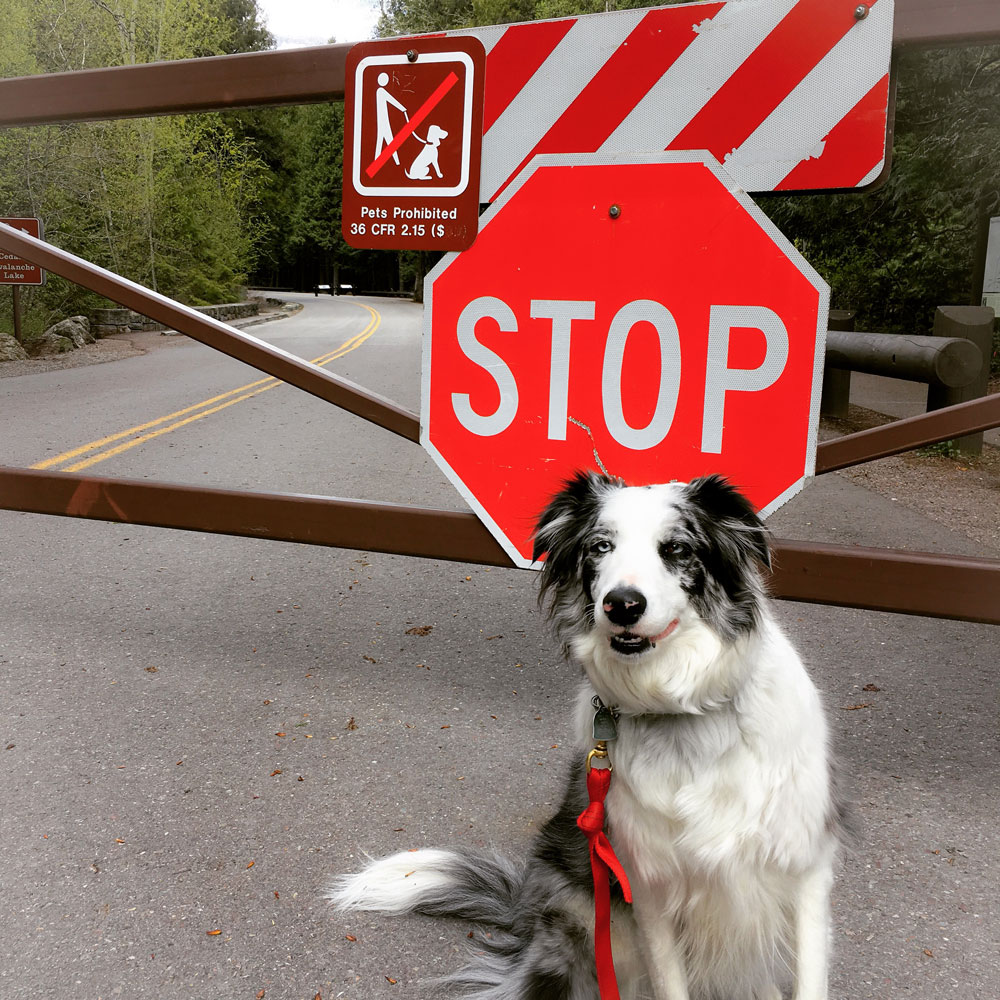
Bark Ranger Gracie is a certified and professionally trained dog who is permitted to go to specific places in Glacier where other dogs cannot. Read the pet regulations for Glacier National Park when planning your trip. For more adorable photos and safety information, follow Bark Ranger Gracie on instagram.
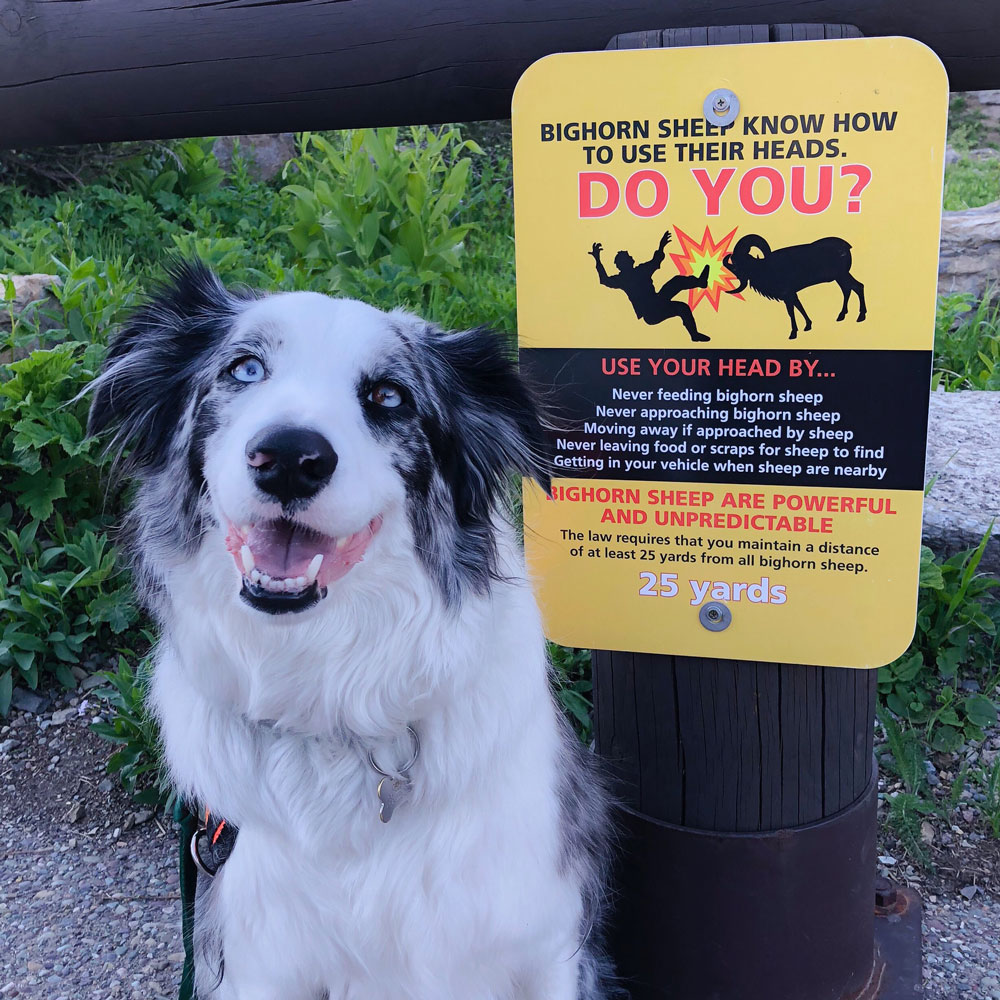
WILDLIFE SAFETY TIPS
Here are some tips for having a safe, pleasant, and respectful experience when wildlife watching.
View wildlife from the safety of your car or from a safe distance. Stay at least 25 yards away from all wildlife except bears—who you’ll need to give at least a hundred-yard berth. Tip: Bring binoculars and a camera with zoom if you’re looking for close-ups.
Never approach, touch or feed wildlife, even when an animal approaches or doesn’t seem to be threatened by your presence—wildlife may not know better, but you do! Don’t risk injury to yourself or the animal over a selfie. Some wildlife have been habituated to approach visitors for human food, but don’t feed wildlife, and be sure to distance yourself from them. Human food is harmful to wildlife, big and small, and can result in poor nutrition and a shorter lifespan. Learn about Leave No Trace for more information about respect for wildlife and their habitat.
Let wildlife know you’re nearby. When hiking, be sure to bring a chatty friend, carry bear spray, stay on designated trails and make noise at regular intervals. Learn more about specific safety information when camping or recreating in bear country.
April 26, 2019
Related: Glacier National Park, Wildlife


Comments